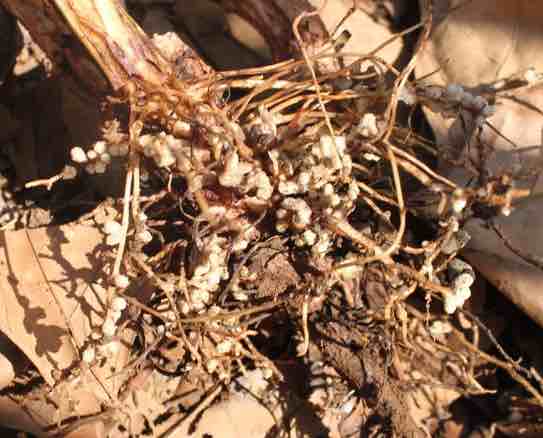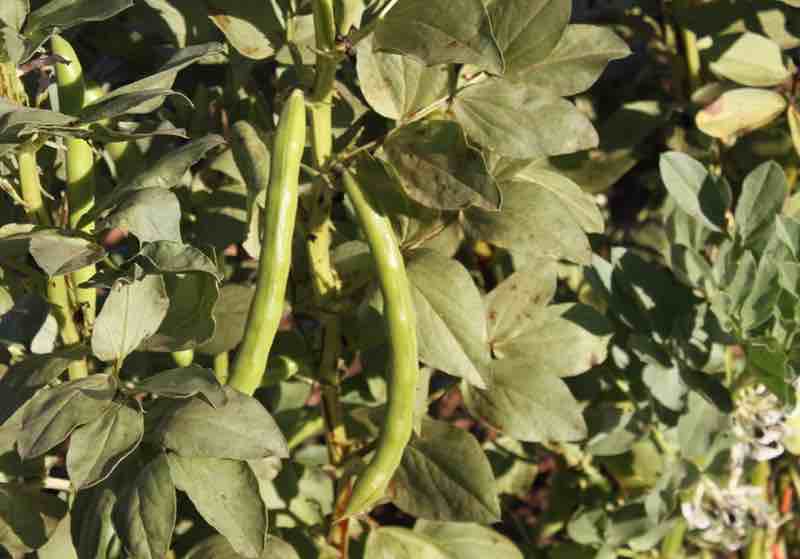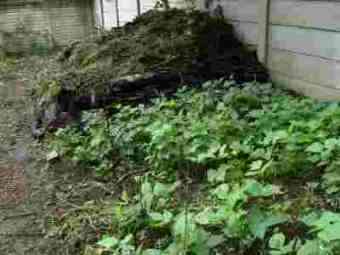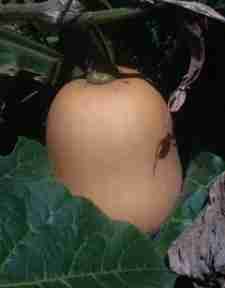- Bernard Preston homepage
- Permaculture
- Nitrogen Fixation Bacteria
Nitrogen fixation bacteria
Nitrogen fixation bacteria in the roots of legumes capture the element from the air for our amino-acids; they are an essential part of the fundamentals of choice foods.
These little bugs may make for a rather dull subject at first sight but they are actually vitally important for every serious gardener to appreciate; even if not totally understand. And if you have any sort of science or biology background, you will find it fascinating; at least, I did.
Why are these rhizobia bacteria so important? Because a shortage of the element nitrogen is the biggest limiting-factor in your vegetable gardening.
Low-nitrogen equates to minuscule vegetable yields.
 Nitrogen fixation bacteria on the roots of a bean plant
Nitrogen fixation bacteria on the roots of a bean plantThis page was last updated by Bernard Preston on 9th February, 2024.
Plants require plenty of nitrogen and, in natural fields and forests it is these bacteria that supply most of the goods.
In modern agriculture this is deemed inadequate and too much schlep, so large quantities of nitrogen are supplied to the soil from fertilizer. However, there is always a but it seems.
This nitrogen is very expensive to produce and transport, requiring large amounts of electrical energy. It uses the Haber-Bosch process that you probably learned about in high school science. Instead nature synthesizes it in situ.
In nature there are but two sources of nitrogen in the soil. That supplied by these tiny rhizobium bacteria that live inside the roots of legumes; and lightning too generates lesser amounts.
Nitrogen fixation bacteria
Nitrogen fixation bacteria are vital; without them life on planet Earth could not exist. Honeybees and other insects have an equally important role in pollinating the flowers of legumes.
What is biological Nitrogen-Fixation?
- Legumes in the garden reduce our reliance on red meat and dairy for our protein.
- Legumes are the power houses where nitrogen-fixation occurs; the gas for all other plants is utterly dependent on the element being forged into the soil. They are unable to produce their own.
So if you want beautiful lettuce, corn and broccoli, you either have to provide biological nitrogen fixation from legumes or use artificial fertiliser. Or perhaps a bit of both, depending on how fanatical you are about organic farming methods.
Inoculating rhizobia onto legume seeds can make a huge difference to the available nitrogen firstly for these plants but also for the next crop.
Nitrogen fixation is a subject
that no wellness and garden-nut can afford to ignore. Fava beans nutrition is a good place to begin; they supply one part of our start personally to the day for most of the year. What is astonishing is that you have no hunger pangs for the rest of the morning; they give satiety. It is known as the subsequent meal effect.
Chickens
Another source comes from keeping chickens; they don't pee so the ratio of nitrogen to carbon in their droppings is more than double that of a cow, and four times that of a horse.
Biological nitrogen-fixation by legumes
There are some very smart bacteria; billions of good bugs, far more than the pathogens that seek to destroy us. Rhizobia have an enzyme that can capture the gas from the air and fix it into a soluble compound called ammonia. Remember the atmosphere is 80 percent nitrogen but plants cannot utilize it; nor can animals like us.
Nitrogen is the basis of all amino acids, those vital building blocks of protein; and our DNA too. These bacteria then convert the ammonia into these compounds for their own needs and the host legume.
Then when they die, this nitrogen is released into the soil and becomes available to other plants like your lettuce and maize that need it for their genes; and hence to us for our own building-blocks when we eat vegetables with protein.
Where do legumes come into this? Not all plants can become involved in fixation of nitrogen. Your lettuce cannot, neither the broccoli you are trying to grow.
You and I are unable to either; but the pea and bean can. Legumes have special nodules on their roots where these unique nitrogen-fixation bacteria find their way from the soil.
Pull out a bean plant and check the roots out. Do you see all those bumps? That is biological nitrogen-fixation.
You may be wondering what are legumes? They make a huge contribution to what today are considered good brain foods.
 Broad beans are our favourite legume because they contain all 9 of the essential amino acids.
Broad beans are our favourite legume because they contain all 9 of the essential amino acids.Atmospheric nitrogen-fixation by lightning
Atmospheric nitrogen fixation by lightning is the lesser way that nature makes the element available to plants; and hence to us[1].
Every gardener knows that in some mysterious way, rain associated with lightning is so beneficial to the vegetables. Within days everything is greener, with new shoots appearing; it is all about the formation of nitrogen-oxides and ammonia from the atmosphere. They are highly soluble in water, making the element available to plants.
Newsletter
Our newsletter is entitled "create a cyan zone" at your home, preserving both yourself and Mother Earth for future generations; and the family too, of course. We promise not to spam you with daily emails promoting various products. You may get an occasional nudge to buy one of my books.
Here are the back issues.
- Lifestyle and ideal body weight
- What are ultra-processed foods?
- Investing in long-term health
- Diseases from plastic exposure
- Intensive lifestyle management for obesity has limited value
- A world largely devoid of Parkinson's Disease
- The impact of friendly bacteria in the tum on the prevention of cancer
- There's a hole in the bucket
- Everyone is talking about weight loss drugs
- Pull the sweet tooth
- If you suffer from heartburn plant a susu
- Refined maize meal and stunting
- Should agriculture and industry get priority for water and electricity?
- Nature is calling
- Mill your own flour
- Bake your own sourdough bread
- Microplastics from our water
- Alternative types of water storage
- Wear your clothes out
- Comfort foods
- Create a bee-friendly environment
- Go to bed slightly hungry
- Keep bees
- Blue zone folk are religious
- Reduce plastic waste
- Family is important
- What can go in compost?
- Grow broad beans for longevity
- Harvest and store sunshine
- Blue zone exercise
- Harvest and store your rainwater
- Create a cyan zone at your home
Our own protein requirements are utterly dependent on the nitric oxides from the arcing effect of lightning.
And the ammonia formed by nitrogen-fixation bacteria; the rhizobia.
Researchers by counting flashes from satellites estimate that lightning releases about 26,000 tons of nitrogen-oxides into the atmosphere every year; that is small fry compared to the biological fixation of the element by legumes, yet important.
Gardeners have also known for millennia that vegetables planted where last season there was a pea or bean crop, are particularly luscious and bear abundant fruit.
And so gardeners use plant-rotation. A pea or bean will be followed by lettuce or broccoli, for example; and then by a root crop like carrot or onion.
And then back to the nitrogen-fixation of legumes.
This happy, symbiotic and mutually-advantageous relationship between legumes and nitrogen fixation bacteria can make the organic gardener completely independent of synthetic fertilisers.
We can and should use biological nitrogen-fixation to the advantage of the plants, our own food and Mother Earth. It's a true Cyan Zone issue.
Starting a compost pile
Starting a compost pile is the other side of the coin when you are trying desperately to grow nutritious choice foods. Vegetable plants of course need a lot more than just nitrogen.
Something new is to turn compost heaps into raised garden beds for the whole patch.
Whilst biological nitrogen-fixation is a vital gardening practice, so is starting a compost pile for all the other nutrients that your broccoli, carrots and lettuce are going to need.
And perhaps if you love succotash like I do, your first attempt will be at growing lima beans; they are legumes for our own protein needs, in addition to their capacity to fix nitrogen for the soil.
Later I will be pulling up some old legume plants; it is the end of summer. We must be careful to save bean seeds for next season; then I will get some photos of the roots so you can see the nodules where these amazing nitrogen-fixation bacteria are so busily engaged in providing for our garden.
Getting your garden soil ready for planting also happens to be a profound way of sequestering carbon in the atmosphere and getting most of it back where it belongs; in the ground.
What is nitrogen-fixation?
Have you got it? It's all about capturing unusable nitrogen from the atmosphere and making it available for our plants. Even if you do not have a vegetable garden as such, it is not difficult to plant a few pole beans here and there; or some peas between your flowers. The taste of organically grown veggies is without equal.
When browsing use right click and "Open Link in New Tab" or you may get a bad gateway signal.
Growing Green Beans (bush)
Growing green beans need a compost-rich environment; in turn the put back nitrogen into the soil.

I have four compost heaps on the go; yes, we have a large African garden. Each year in the spring we will grow a crop of bush beans in what is left of one of the piles of humus.
Once we have reaped the lush and prolific crop then I just cover the bean plants, nitrogen fixation bacteria and all to infect the new compost heap with these amazing little friendly bugs.
Do not swallow the claptrap that the banting folk are giving out that legumes are bad for you because of their starch content; it is very low GI carbohydrate that does not produce a fattening insulin rush like donuts, delicious white rolls and potatoes from cold storage do.
If you are still unsure, find out more about the meaning of starch.
GROWING BUTTERNUT SQUASH
I photographed these two butternuts this morning, the one in virgin soil and the other, the monster, at least double the size, growing where last year I grew peas. Can you see the influence of the nitrogen fixation by the bacteria?


An aside
Fixation of nitrogen requires a great deal of energy.
These amazingly little bacteria get that energy from aerobic respiration and then provides it for an enzyme called nitrogenase; it converts the gas from the air into ammonia.
We are of course slowly but surely running out of fossil fuels. One day all of agriculture will have to rely on biological nitrogen fixation for our food, just like plants have done for billions of years before the arrival of man. Real progress goes backwards sometimes.
Have you thought of starting to get some of your electricity from
solar power energy?
We can try to ape those rhizobia bacteria; shall we call it solar fixation? It will help to sustain the planet so that our children will still have a place to live once the world's fossil fuels have run out.
Join me in becoming a environmental freak and being consumed by the need for plenty of energy and vitality for ourselves; and leaving a wonderful legacy to our offspring.

Useful links
NITROGEN FIXATION BACTERIA
- Did you find this page useful? Then perhaps forward NITROGEN FIXATION BACTERIA to a fellow book- and earthworm.
Did you find this page interesting? How about forwarding it to a friendly book or food junkie? Better still, a social media tick would help.
- Bernard Preston homepage
- Permaculture
- Nitrogen Fixation Bacteria
Address:
56 Groenekloof Rd,
Hilton, KZN
South Africa
Website:
https://www.bernard-preston.com